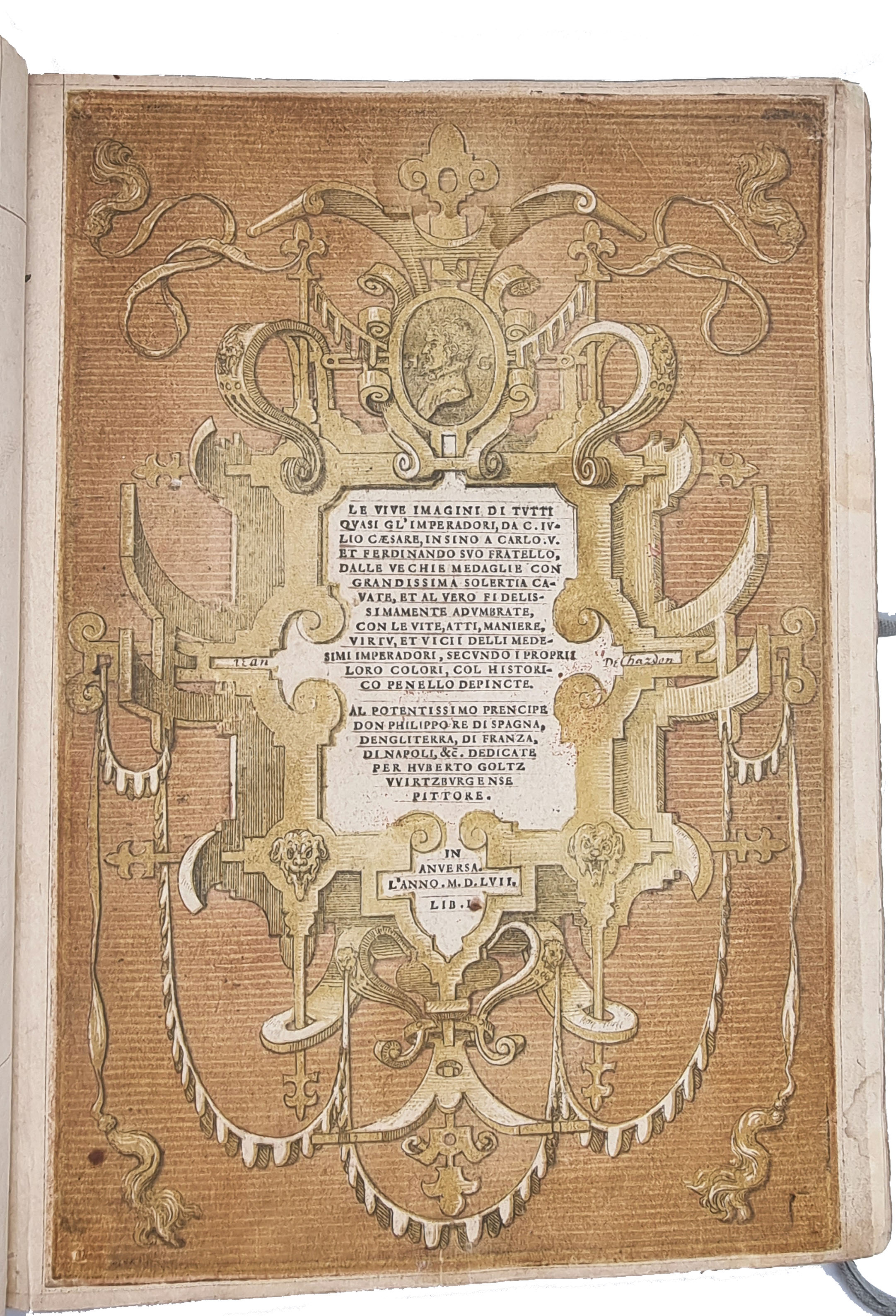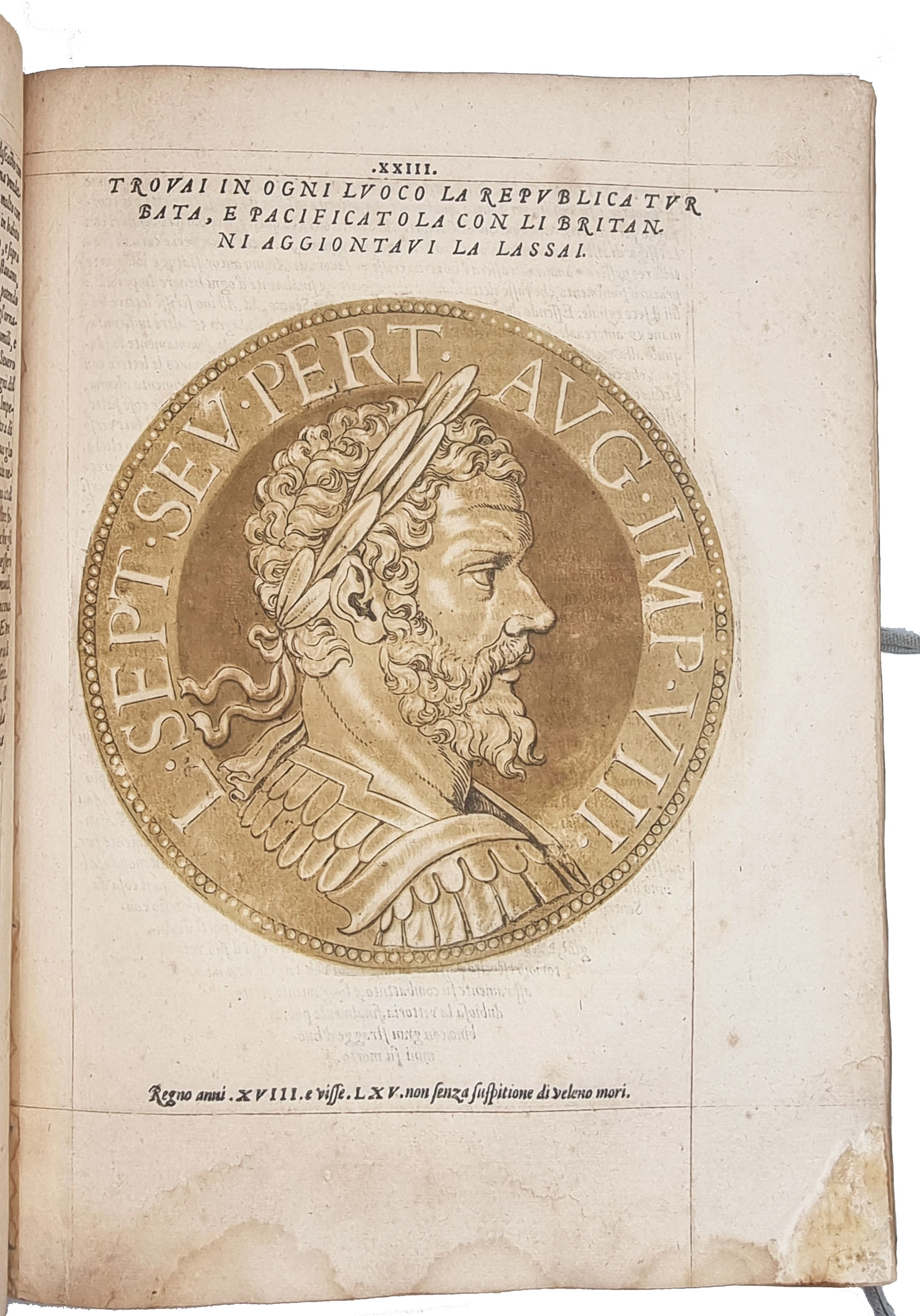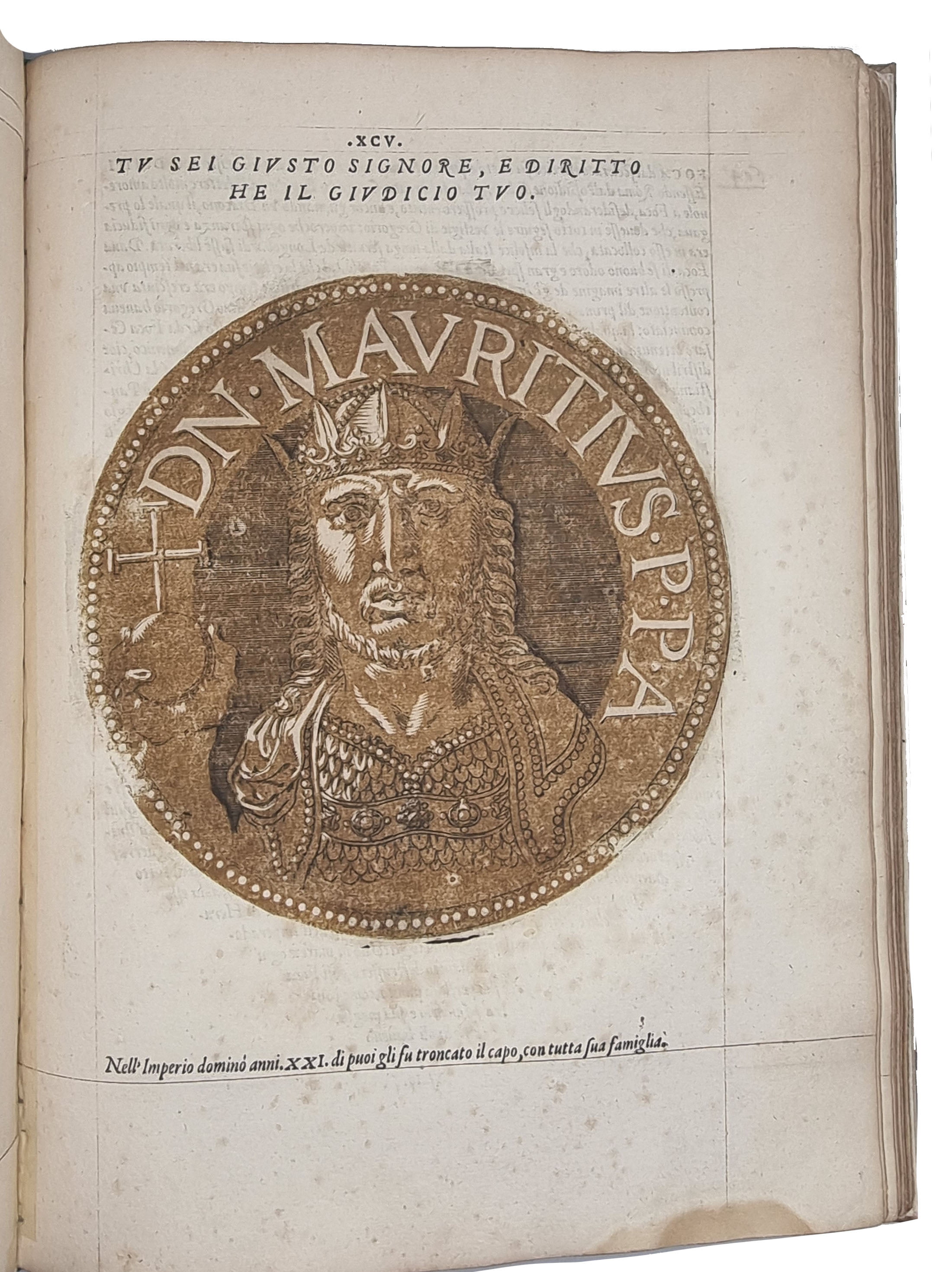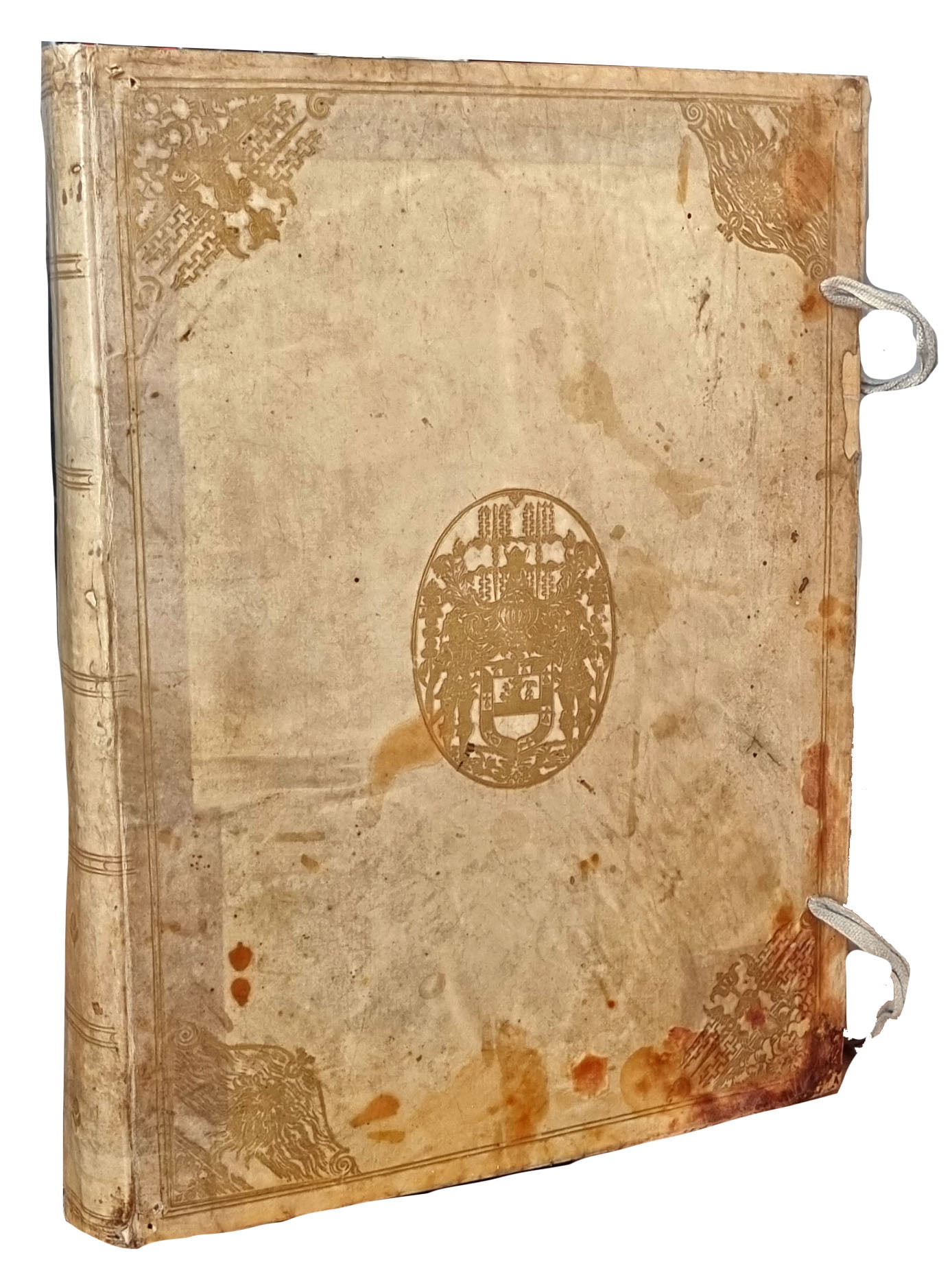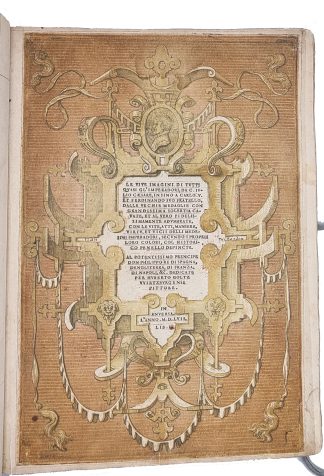GOLTZIUS, Hubertus.
THE FIRST CHIAROSCURO
Le vive imagini di tutti quasi gl’imperatori.
Antwerp, [Egidius Copenius Disthemius], 1557£6,500.00
Folio. 177 unnumbered ff., (i) *6 a-b6 A-Z6 Aa-Bb6 Cc-Dd4, 149 plates included in signature. Italic letter, little Roman, all pages ruled in red. Additional hand-coloured etched frontispiece with arms of the Norroy family flanked by two soldiers, etched t-p with architectural vignette and small oval portrait of Goltzius, 149 full-page plates of medals with 155 emperors’ portraits (6 on same plate), etched and cut in chiaroscuro in ochre and brown. Light mainly marginal waterstaining, page numbers in table of contents erased at a6, b and b6 (editorial?), first few ll. reinforced at gutter and outer margin, mostly light see-through colouring from plates as usual, a bit of spotting in places. A good, well-margined copy, on thick paper, in contemporary polished vellum, recased, modern eps, two ties, double gilt ruled, gilt cornerpieces with hand holding thunderbolts and Coma Berenice constellation, gilt oval centrepiece with arms of the Norroy family, spine double gilt ruled in six compartments, gilt rosette to each, few ancient ink stains, repairs to two edges and corners. Slightly later ms. ex-libris of C. Chardon to fep, French and Latin marginalia.
Lavishly coloured, handsomely bound copy of this masterpiece of Renaissance numismatics. This copy features an additional etched, hand-coloured frontispiece with the same armorial design as the gilt centrepieces on the covers. The escutcheon—‘d’argent à la fasce de gules, acc. en chef d’un lion naissant de sable, mouvant de la fasce’ (Rietstap, ‘Armorial général’, 329)—is probably that of the Norroy family in Berry. (According to Rietstap, the double-queued tail can be a variation on the single-queued, without indicating any specific heraldic differences.) At the time, the bearer of the arms was Jean de Norroy (d. after 1570), seigneur de Lestang and chevalier de l’Ordre de Saint-Michel (‘Archives généalogiques’, 58). His seat was the Castle of Orbigny in the Val de Loire; nothing else is known about him except a few mentions in notarial documents. The bordure in gules and ermine may indicate a younger branch of the family or a reference to the maternal line. The crest and the cornerpieces feature thunderbolts modelled after the iconography of ancient Roman deities; the person who designed the binding was well-acquainted with classical antiquity.
Hubertus Goltzius (1526-83) was a Flemish painter and engraver trained in classical art by his father, a German artist. He worked for 12 years on this compendium of Roman imperial coins and medals, from Julius Caesar to the Holy Roman Emperors Charles V and Ferdinand, which he had seen in the collection of Antwerp humanists including the geographer Cornelius Grapheus and the antiquarian Marc Laurin, Duke of Watervliet. The first edition was published in Spanish in 1550; Italian, German and Latin translations followed in 1557, urged by the great success of the work. This is the second Italian edition, which bears a slightly different title. Goltzius’s work displayed the first combined use of copperplate and woodblocks engraved following the chiaroscuro technique—its first appearance in a book. The woodcutter, Josse Gietleughen of Courtrai, prepared two blocks for each etched image: ‘a darker tone provide[d] the background for the effigy, a lighter tone the flesh-tone and the background for the inscription, and the white of the paper the highlights’ (‘Printing Colour 1400-1700’, 154). In this copy changes in degrees of ochre, brown and green between plates well illustrate the ongoing experimentation with chiaroscuro printing. Each medallion is surmounted by a motto summarising the virtues and vices of the individual emperor and preceded by a short account of his deeds. The annotator, who wrote in French and Italian, was interested in the dates of the emperors’ accessions, which he noted on the margins, and on religious references (e.g., the appearance of the ‘Antichristo’ Mahomet among the Saracens under Heraclius and that the Kings of England ‘are now all heretics and excommunicated’).
Pettegree, Netherlandish Books, 13493; Brunet II, 1654 (mentioned). Not in BM STC Dutch or Adams.In stock


